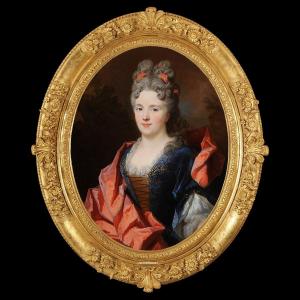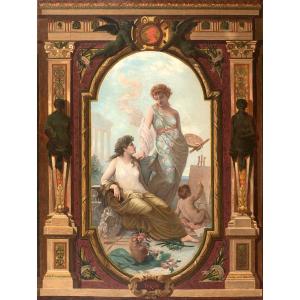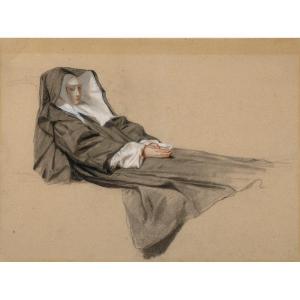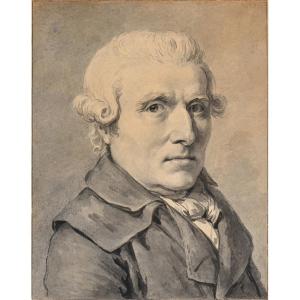(Paris, 1819 – Coubron, 1885)
The crows, plain of Chartres
Oil on canvas
H. 33 cm; L. 41 cm
Signed and dedicated lower right “to Me Boussaton”
Probably around 1884
Related works :
- Painting from the Salon of 1885, number 2199, titled En pays chartrain, preserved at the Musée des Beaux-Arts de Chartres, in the style and close composition
- Painting preserved in the Chartres museum, titled Scene of plowing in Beauce
Provenance:
- Me Auguste Jules Boussaton (1821-1901), auctioneer and collector;
-Its sale, June 5, 1901, Hôtel Drouot, lot 77 “Les corbeaux, plaine de Chartres”.
Before undertaking the big trip to Italy, Alexandre Sègé trained with Léon Cogniet and the landscaper Camille Flers. Apart from a few views of Switzerland, his work will be essentially devoted to France: Corsica, which he visited very early, in the 1840s, Pas-de-Calais and especially Brittany, which he discovered in 1838 and where he returned. regularly. Although he stayed mainly in Erquy and Cap Fréhel, where he spent the war of 1870, he was also attracted by the austere moors of the Monts d'Arrée. Although he exhibited regularly at the Salon since 1844, he would have to wait more than thirty years before receiving a second class medal in 1873, then the Legion of Honor the following year. An austere worker, a sincere, literate and delicate artist, he is described by Louis Enaut, in the Paris Salon of 1882, as "...certainly one of the greatest landscapers of our time...nature is for him the object of a cult sincere and pious; he experiences real emotion when he picks up his brushes to paint it…”. In L'Artiste, on the occasion of the Salon of 1877, Arsène Houssaye wrote: “So he is never wrong about the range of skies, waters, trees and grasses. He penetrates its intimate harmony.” Ségé is the painter of vast expanses with distant and clear horizons, treated with simplicity and realism, where he shows himself close to an artist such as Antoine Chintreuil. But in our painting, he adds a touch that we could consider German, or at least Nordic. The comparison with the work of a certain Friedrich is quite tempting... The stormy atmosphere, the crows circling in the foreground to the point of occupying three-quarters of the work, the millstones and the cathedral presented as simple silhouettes, are all borrowings from fantastic and romantic imagery. The work is in the spirit of his most famous painting, In Chartres Country, ample and large composition (136 x 204 cm) with differentiated plans where light and space serve as a setting for Chartres Cathedral. Another painting in the same style, of similar dimensions to ours, was recently acquired by the Chartres museum. The interest in Chartres can be explained by the roots of Ségé's family in this city, where his father, a roaster, was born (and where his uncles and cousins are active in the food and livestock professions), even if he settled in Bondy (current eastern suburbs of Paris) around 1840. Alexandre was also, from 1881 to 1883, mayor of Coubron, a commune neighboring Bondy and where his friend Corot had settled in the 1870s/ 75. Note that the buildings visible in these Chartres paintings are probably those of the hamlet of Sèche Côte, in Champhol. The dedicatee of the painting, Auguste-Jules Boussaton (1821 – Monaco, 1901), was a famous collector and auctioneer, specializing in artist sales (works by the same painter, charity sales for widows of artists , etc…). He officially stopped his activity in 1876, replaced by his young colleague Tual, but continued to be active in the art world, putting on exhibitions. On May 12, 1874, he had notably organized the sale of 32 paintings by Alexandre Ségé, and the two men maintained friendly ties.




































 Le Magazine de PROANTIC
Le Magazine de PROANTIC TRÉSORS Magazine
TRÉSORS Magazine Rivista Artiquariato
Rivista Artiquariato